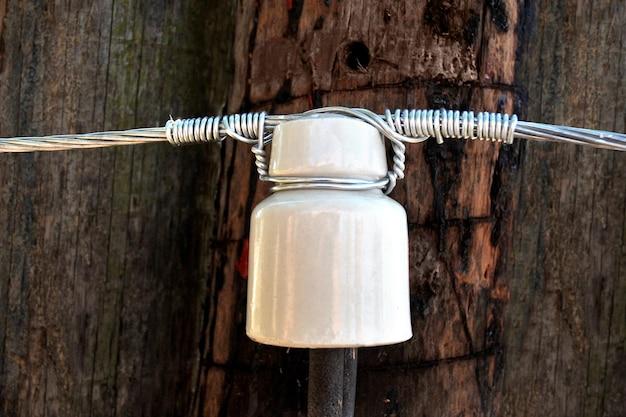Ceramics have been used for centuries in various applications, from pottery to advanced engineering materials. One common question that arises when discussing ceramics is whether they are electrically conductive. In this blog post, we will explore the electrical properties of ceramics and see how they compare to metals and other materials.
As we delve into this topic, we will address some related queries, such as “Is zirconium electrically conductive?” and “Do ceramics not conduct electricity?” We will also touch upon the different types of ceramics and their electrical conductivity. Additionally, we will cover why ceramics are not as conductive as metals and discuss the thermal conductivity of ceramics. So, if you’ve ever wondered about the electrical properties of ceramics, keep reading to find out more!
Are Ceramics Electrically Conductive
Ceramics have been around for thousands of years, and they’ve come a long way since the days of simple clay pottery. Nowadays, ceramics are used in a wide range of applications, from electrical insulation to cutting-edge technology. But are they electrically conductive? Let’s dive into the fascinating world of ceramic conductivity and find out!
The Insulating Power of Ceramics
When you think of ceramics, you probably imagine delicate vases or beautiful tea sets. And you’re not wrong – ceramics are often admired for their aesthetic appeal. But what makes ceramics truly remarkable is their ability to insulate against electricity. Unlike metals, which are excellent conductors, ceramics have a unique atomic structure that restricts the flow of electric current.
The Crystal Clear Explanation
To understand why ceramics are insulators, we need to take a closer look at their crystal structure. Ceramics are made up of an array of atoms that form a tightly packed lattice. These atoms are held together by strong chemical bonds, creating a rigid structure that inhibits the movement of electrons. As a result, ceramics act as barriers to the flow of electric charge, earning them their reputation as excellent insulators.
Exceptional Exceptions
While ceramics generally have low electrical conductivity, it’s important to note that there are exceptions to every rule. Some ceramics, known as conductive ceramics, do possess the ability to conduct electricity to a certain degree. These ceramics are created by adding impurities or altering the atomic structure to introduce free-moving electrons. So, while most ceramics are insulators, there are some fascinating outliers in the ceramic family tree.
The High-Tech Potential
So, if ceramics are primarily insulators, why do we still celebrate their electrical properties? Well, it turns out that their insulating nature makes them incredibly valuable in certain applications. Ceramics are widely used in electronic devices as electrical insulation materials, protecting sensitive components from short circuits and unwanted electric currents. They also find use in capacitors, resistors, and other electrical components where their non-conductive nature is harnessed as a crucial feature.
In conclusion, ceramics are primarily known for their ability to resist the flow of electric current, making them exceptional insulators. However, there are a few conductive ceramics that challenge the norm. Whether it’s their insulating power or their unique electronic properties, ceramics continue to play an essential role in various industries, from electronics to aerospace. So, next time you admire a delicate ceramic masterpiece, you can appreciate its dual nature as both an insulator and a conductor, all in one elegant package.
FAQ: Are Ceramics Electrically Conductive
Ceramics have been used for centuries in various applications due to their unique properties. One commonly asked question is whether ceramics are electrically conductive. In this FAQ-style subsection, we will answer several frequently asked questions related to the electrical conductivity of ceramics and explore why they differ from metals in this aspect.
Is Mercury a Conductor
Yes, mercury is an exceptional conductor of electricity, even in its liquid state. This is due to its high electron mobility, allowing electric currents to easily pass through it. However, it’s important to note that mercury is toxic and should be handled with caution.
What Are 5 Good Conductors
Five common examples of good electrical conductors are copper, silver, gold, aluminum, and iron. These materials possess high conductivity, making them suitable for various applications, including electrical wiring and circuitry.
Is Aluminium a Good Conductor of Electricity
Yes, aluminum is a good conductor of electricity. While it’s not as conductive as copper or silver, aluminum’s lightweight and corrosion-resistant properties make it a popular choice for electrical transmission lines and wiring.
Is Zirconium Electrically Conductive
Zirconium, in its pure form, is not an efficient electrical conductor. However, it can become electrically conductive when alloyed with other elements. The conductivity of zirconium alloys varies depending on the specific composition.
Is a Nail a Conductor
Most nails, especially those made of common materials like iron or steel, can conduct electricity. However, the conductivity of a nail may depend on factors such as its composition and surface condition.
Is Aluminum Foil Conductive to Electricity
Yes, aluminum foil is an excellent conductor of electricity. Its thin, flexible nature allows it to easily transmit electrical currents. This is why aluminum foil is commonly used in various electrical applications, such as wiring and electrical connections.
What Are the Three Types of Ceramics
The three main types of ceramics are earthenware, stoneware, and porcelain. Each type has its own unique characteristics and uses. Earthenware is porous and less durable, stoneware is dense and durable, while porcelain is non-porous and has a smooth, white appearance.
Is Zirconia Electrically Conductive
Zirconia, a ceramic material, is generally considered an electrical insulator. However, under certain conditions, such as high temperatures or when doped with impurities, zirconia can exhibit electrical conductivity properties.
Do Ceramics Not Conduct Electricity
Ceramics, in general, are known to be poor conductors of electricity. Unlike metals, ceramics have a crystalline structure that does not allow the free movement of electrons required for efficient electrical conduction.
Is Ceramic a Heat Conductor
Ceramics are generally poor heat conductors compared to metals. Their molecular structure limits the transfer of heat, making ceramics excellent insulators. This property is harnessed in applications such as protective coatings and heat-resistant materials.
Is Phosphorus a Good Conductor of Electricity
Pure phosphorus is a poor conductor of electricity. However, it is often used as a dopant in semiconductors to modify their electrical properties. Phosphorus is commonly employed in the manufacturing of electronic components and devices.
Is Silver a Good Conductor of Electricity
Silver is an excellent conductor of electricity and has the highest electrical conductivity among all elements. Its low resistivity makes it a popular choice for applications such as circuitry, electrical contacts, and high-performance conductors.
What Is the Electrical Conductivity of Ceramic
The electrical conductivity of ceramics is generally low compared to metals. Ceramics are classified as insulators or semiconductors due to their high resistivity and limited ability to conduct electric current.
Is Brick a Good Conductor of Heat
No, brick is not a good conductor of heat. Bricks have low thermal conductivity, meaning they do not transfer heat easily. This property allows them to act as effective insulators in construction applications, helping to maintain comfortable indoor temperatures.
What Are Four Properties of Ceramics
Four notable properties of ceramics are their high hardness, heat resistance, chemical inertness, and low electrical conductivity. These properties make ceramics suitable for applications such as pottery, construction materials, and protective coatings.
Why Ceramics Are Not Electrically Conductive Compared to Metal
The difference in electrical conductivity between ceramics and metals lies in their atomic arrangements. In metals, the presence of delocalized electrons allows for efficient electrical conduction. On the other hand, ceramics have a more tightly bound atomic structure, restricting the movement of electrons and resulting in poor electrical conductivity.
Are Ceramics Good Conductors of Heat and Electricity
No, ceramics are generally not good conductors of heat and electricity. While ceramics can dissipate heat to some extent, their thermal conductivity is significantly lower than that of metals. Similarly, their electrical conductivity is much lower compared to metals.
Is Ceramic a Good Electrical Insulator
Yes, ceramics are excellent electrical insulators due to their low electrical conductivity. This property makes them vital in various applications where electrical insulation is required, such as in insulators, electronic components, and high-voltage equipment.
Are Ceramics Brittle
Yes, ceramics are commonly known for their brittleness. Their atomic structure and the presence of strong ionic or covalent bonds result in less flexibility compared to metals. While this brittleness limits their use in certain applications, it also provides ceramics with unique properties that make them ideal for specific purposes.
Which Metal Is the Poorest Conductor of Electricity
Among common metals, tungsten has one of the highest resistivities, making it one of the poorest electrical conductors. This property allows tungsten to be used in applications that require resistance heating, such as incandescent light bulbs.
Is Iron a Conductor or Insulator
Iron is a good electrical conductor. Its abundance, desirable magnetic properties, and conductivity make it an essential metal in the production of electrical wires, motors, and transformers.
What Are the Advantages of Ceramics
Ceramics offer numerous advantages, including high heat resistance, chemical inertness, excellent electrical insulation, and durability. Additionally, ceramics can be manufactured with precise shapes, sizes, and properties, making them versatile materials for a wide range of industries, from aerospace to medical devices.
Is Aluminium a Poor Conductor of Electricity
No, aluminum is not a poor conductor of electricity. In fact, it is a reasonably good conductor. While not as conductive as some other metals, aluminum is still widely used in electrical applications due to its favorable combination of electrical properties and lightweight nature.
What Are Electrical Properties of Ceramics
The electrical properties of ceramics are primarily characterized by their high resistivity, low electrical conductivity, and electrical insulation capabilities. These properties allow ceramics to act as insulating materials, preventing electrical current flow and providing exceptional dielectric strength.
Ceramics, while exceptional materials in many respects, are not inherently good electrical conductors like metals. Understanding the differences in electrical conductivity between ceramics and metals is crucial for selecting the appropriate materials in various applications. Whether you’re exploring the world of ceramics or seeking answers to related questions, we hope this FAQ-style section has provided you with valuable insights.

